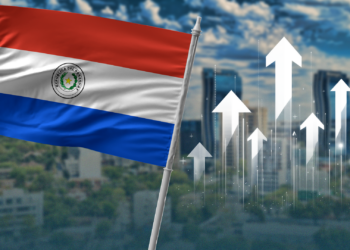Juan Francisco Yucute sits in the back of his small grocery store in El Rejón, a village of narrow dirt streets west of Guatemala City. The shop’s name, La Bendición (Spanish for “the blessing”), is emblazoned at the top of a concrete wall painted the color of sea foam. Slowly, Mr. Yucute explains why he had once considered coming to the United States illegally.
He and his wife were working on farms under harsh conditions in their native Guatemala and dreaming of a better life for themselves and their children someplace else. “Farming is tough – working under the sun, the rain, and dealing with impassable roads when it rains too much,” Mr. Yucute says.
Then he heard of a program run by the Cuatro Pinos agricultural cooperative and the nonprofit Juan Francisco García Comparini Foundation. The program allowed him to secure an H-2A visa so that he could do farmwork legally in the U.S. for a few months and then return to his homeland with his earnings – a process known as circular migration.
Why We Wrote This
The American dream beckons many migrants. Circular migration helps them strengthen their communities back home.
Mr. Yucute and his wife used the money to start La Bendición. Some days he likes sitting and watching people walk past the store, one of the only shops in the village. He is waiting for his chance to be called back to the States to work again.
Arnoldo Chile is another participant in the program. With an H-2A visa, he works in the U.S. for several months each year, earning significantly more than the $450 he could make per month in Guatemala. Since joining the program in 2016, he has progressed from harvesting broccoli, cabbage, and lettuce to working in a supervisory role earning $19 per hour. The wages have allowed him to buy land and create jobs in El Rejón through blackberry production.
Besides providing individual economic opportunities, circular migration can strengthen communities as migrants reinvest their earnings in land, housing, and local businesses. Women often assume greater leadership roles at home.
“That was my goal from the beginning: to earn money abroad so I could invest in my homeland,” Mr. Chile says.
For more visual storytelling that captures communities, traditions, and cultures around the globe, visit The World in Pictures.











